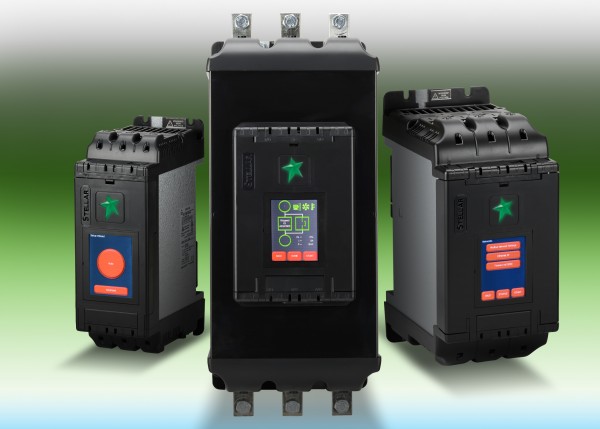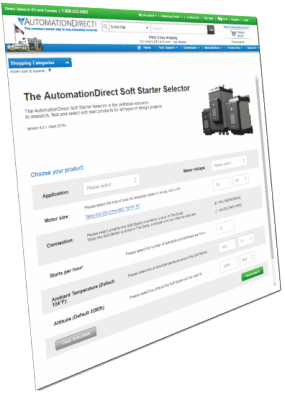What may seem to be a simple task of selecting a soft starter for your motor may be a more demanding task than first meets the eye. “I just need to know the HP and Voltage to pick the correct one, isn’t that right?”
Well, in fact, it’s not quite that simple. To properly select a soft starter, there are a number of physical and application attributes that need to be considered for longevity and correct handling of the soft starter, the motor and the attached equipment. So, when you need to select a Soft Starter for your application, where do you begin?
The Importance of Motor Horsepower and Voltage
 As mentioned before you do need to know the Motor Horsepower and Voltage, and those are readily available from the name plate of the motor, but just as important as those attributes are the application, environment, and operating conditions for the entire system; of which the soft starter is a key component.
As mentioned before you do need to know the Motor Horsepower and Voltage, and those are readily available from the name plate of the motor, but just as important as those attributes are the application, environment, and operating conditions for the entire system; of which the soft starter is a key component.
The selection process begins with the application type which falls into one of three categories or Classes; Class 10, Class 20, or Class 30. These classes are differentiated by the amount of current required during the starting and stopping processes, which are normally the most demanding portions of use time for the motor; and the current temperature of the motor. Lightly loaded motors that do not need to accelerate very quickly, and do not require too many starts and or stops with in an hours’ time normally fall into the Class 10 category. Class 10 applications include some fans, blowers, unloaded/lightly loaded conveyors, unloaded/lightly loaded mixers, etc. Median loading of a motor while coupled to the load may require classification as a Class 20 application. Applications such as most compressors, hammer mills, grinders or loaded mixers normally fall into this class. The most demanding applications are classified as Class 30. These are heavy applications such as shredders, crushers, or high inertia fans requiring greater than 85 running amps. Added to these are the use and environmental conditions that affect the motor’s temperature, such as altitude, as thinner air means less cooling, and starts and stops per hour which add to the motor’s stress and temperature.
With these and a few more factors such as type of motor electrical connection (i.e. Inline (Wye) or Delta) and the ambient temperature, you can properly select a soft starter. Without considering all these factors, an undersized or otherwise inadequate soft starter might be selected and operational difficulties or damage to the starter or other system components can result.
A Selector For All of Your Needs
 But before your eyes glaze over, you may not have to worry about all of those technical details. In consideration of all those issues, we’ve created a selector to make the selection process simple and much more comprehensive, enabling confidence in the selection of a soft starter for your application.
But before your eyes glaze over, you may not have to worry about all of those technical details. In consideration of all those issues, we’ve created a selector to make the selection process simple and much more comprehensive, enabling confidence in the selection of a soft starter for your application.
With a simple dropdown style menu, you can choose from a comprehensive list of over 40 soft starter applications that most closely match your requirements (or simply choose an application class), select your motor voltage and size, then answer a few simple questions such as “Anticipated starts per hour” (you can try a conservative number and a liberal number to see how it affects the product offering); “Ambient temperature”; “Altitude” etc., and the selector will provide suggestions for an appropriate soft starter. You’ll also find technical data and definitions to help you gain more soft starter application knowledge, increasing your confidence as you make your selection. Once you’ve decided on the criteria that best matches your application needs, you can simply choose from the list of models offered and add one to your shopping cart. The end result is the purchase of a correctly sized (and economically priced) soft starter that will meet your needs and requirements: quickly, easily and confidently.
Check out the AutomationDirect Soft Starter Selector Tool by visiting www.automationdirect.com/selectors/softstarters.


